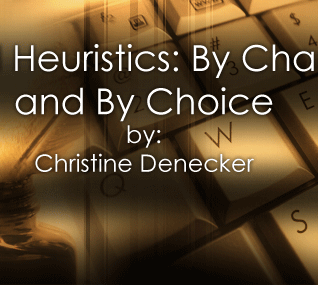


Three Encounters "When can we start?" On one level, incorporating digital heuristics in the composition classroom can happen rapidly and with minimal preparation on the part of the instructor and the students. In my experience, little discussion was needed regarding the rhetorical nature of visuals and music prior to embarking on the heuristic explanation. As Lee Odell and Susan Katz (2006) argue, students “already know quite a bit about how words and images work together to convey meaning” due to their daily interactions with media and technology (p. 10); a point that Elizabeth Daley (2003) expands by explaining that “the multimedia language of the screen has become the current vernacular” among students” (p. 34). To these points, students appeared comfortable with the assignment and systematically began searching for topics, then images, then music to incorporate into their arguments.The assignment called for the argument to be composed in MovieMaker, and my basic knowledge of the program coupled with the expertise and experience of several students served as the launching point. After that, a natural curiosity regarding the project and the technology took over, and the resulting collaboration, consultation, and trouble-shooting among students allowed me, as instructor, to help narrow topic ideas, facilitate research, and discuss rhetorical as well as design concerns. Also, since the digital argument served as invention work for the students’ argument paper, it received process points rather than a formal grade; this, in turn, lessened the risk involved for students new to the MovieMaker medium. Daley (2003) might describe this approach as a “climate open to experimentation and a willingness to explore and fail . . .” (p.36), since perfection was not the goal. As such, students were seemingly motivated by the challenge of composing in an alternative medium—one in which they possessed some expertise (visuals)—in a “low stakes” environment. "I think I have a better idea of what I want to say" Students’ relative success with the digital “heuristic by chance” process in the Fall 2008 freshman composition course encouraged me to incorporate the strategy into in my Fall 2009 College Writing II course. First, though, I piloted a similar strategy on a smaller scale with my Spring 2009 Advanced Writing students during their final course projects, which included both digital texts and traditional alphabetic texts. Thanks to a more independent course design, these students had the option of ordering their composition tasks and processes: some chose to do digital work first; others moved back and forth between digital and alphabetic construction, while still others completed the alphabetic assignment first and then designed their accompanying digital texts. At the end of the course, I solicited responses from students regarding their steps in the composing process in order to ascertain whether or not the digital work served as a heuristic. Their responses, included in the “Results” portion of this article, suggest that there is, indeed, value to having digital strategies front or accompany alphabetic composition. Thus, digital heuristics were implemented “by choice” in my Fall 2009 writing class.
|